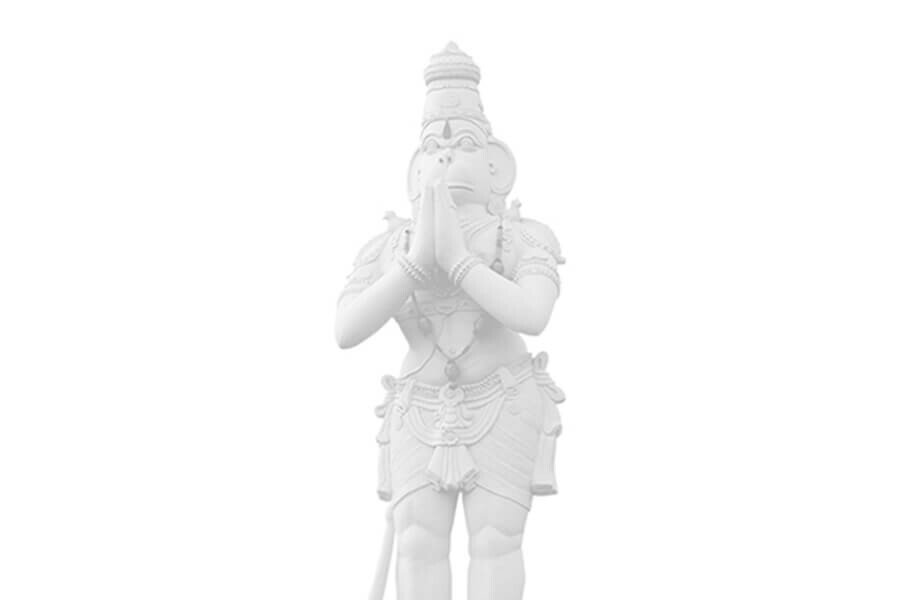The Metaphor of Deepavali
Deepavali, or Diwali as commonly known, will be celebrated on the 12th of November this year. What is the inner, or spiritual, significance of Diwali in Sanatan Dharma? An excerpt from Partho's latest book.

Who is Hanuman? In Ramayana he is depicted as a vanara who helps Rama defeat Ravana and win Sita again. Often shown with the face of an ape in usual depictions with other monkeys.
But if one were to go deeper into the true import of Sri Rama and his avatar, one might gain a new understanding of Hanuman. If we understand the avatar as a descent of Godhead to aid the earth at a crucial moment in its evolutionary spiral, to give an impetus to a shift in its universal consciousness, then Sri Rama is an avatar of Satvik or righteous mind.
The lineage of avatars as described in Hinduism uncannily reflects the evolutionary ascent of life on earth. Darwin would have been proud had he known of them. Beginning from the Fish to the Tortoise to the Boar to the Narsimha (half lion half man) to the small man (Vamana) to the Kinetic and Rajasic man and then to the Satvik man is the journey of the avatars to Sri Rama. Rama is here to establish a baseline of social and human standards.
Only after he has created this standard called Ram Rajya can Sri Krishna or the Buddha follow after. Rama is not transcending the mind to a new global consciousness like Sri Krishna or reaching nirvana like the Buddha. He has to prepare the conditions on earth so that the avatars to follow will have a ground ready and open to their influence. And to aid Rama in this venture is Hanuman, ‘the evolutionary man’, as the Mother from Pondicherry called him. Two things stand out about Hanuman: his utter devotion and surrender to the Divine and the fact that he has forgotten who he is.
Hanuman is the Nara to the Narayana that Sri Rama is. Without Hanuman, Rama is unable to fulfil his mission on earth. He needs Hanuman as his partner, his general, his servant, his adorer and his guard. And Hanuman is the incarnation of the adoration free of desire, the psychic love that surrenders completely to the Lord, demanding nothing but the feet of the Beloved and the Ishtadeva.
This aradhana gives him the immortality and superhuman strength that is at the service of Narayana as Sri Rama. In the heart of Hanuman reside Sita and Rama eternally, and this gives him access to the siddhis spontaneously needed for the work. To me, if we can live with the same love for the Divine, with the same intensity and purity, we will embody the strength and purity that Hanuman is.
The second unique revelation about Hanuman’s story is that he has lapsed into self-forgetfulness, lost all his powers because he no longer remembers who he is. And yet, he recovers all his energy and Shakti, the moment the realization of his true nature hits him. Now he can fly at the speed of thought, lift vast mountains, and change his size at will. He is now the ideal yogi who has mastered the eight unique siddhis that would aid him in his service of Rama.
Awakened to himself, he completes the equation between the human and the Divine. So too can we. Our fall is not ordained as permanent; nor is it irredeemable. Hanuman is a representative not just of the ape-man but any worshipper, any lover of God, no matter what his species or tribe might be. Hanuman resides in the human heart, as our own flame of still indestructible love for the Divine. He is us. We only need to discover perhaps our own inner Hanuman, and then live him to the utmost. That is the one crucial element needed that may fulfill the mission of the avatars on earth once again.
Author, poet, philosopher and medical practitioner based in Florida, USA. Pariksith Singh has been deeply engaged, spiritually and intellectually, with Sri Aurobindo and his Yoga for almost all his adult life, and is the author of 'Sri Aurobindo and the Literary Renaissance of India', 'Sri Aurobindo and Philosophy', and 'The Veda Made Simple'.
Deepavali, or Diwali as commonly known, will be celebrated on the 12th of November this year. What is the inner, or spiritual, significance of Diwali in Sanatan Dharma? An excerpt from Partho's latest book.
The first of a four part series on Vedanta from Swami Vivekananda’s famous ‘Calcutta address on Vedanta’ delivered in Calcutta on January 19, 1897. This talk marks a significant moment in Swamiji’s life and is considered one of his most important speeches on Vedanta, where he explains some significant aspects of Sanatan Dharma
A series of conversations on Sanatan Dharma and Vedanta between our editors, Dr Singh and Partho. This is the first conversation in the series, describing the initial process of Vedanta

